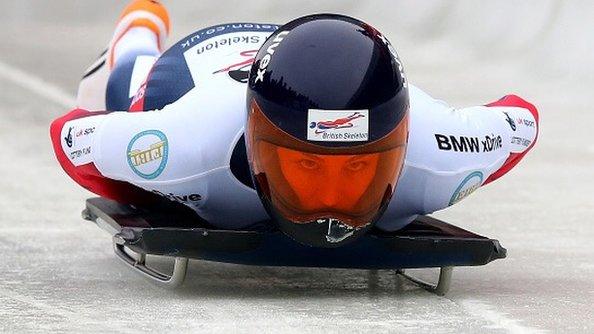Laura Deas column: 'At first skeleton felt completely alien'
- Published
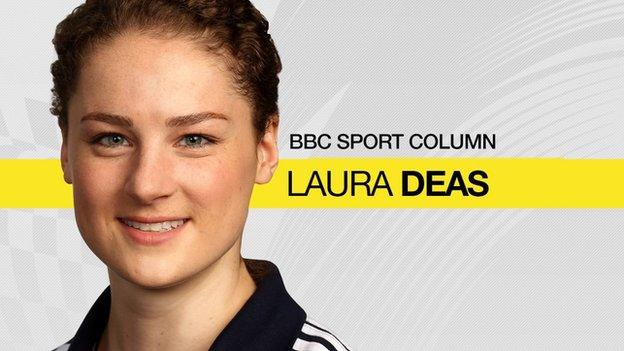
Sport has always featured heavily in my life. I'm very competitive and I like to always try and be better at something than I was to start with.
However, I haven't always been a skeleton athlete - in fact, until I was selected for it by UK Sport, I didn't actually know what it was.
I always wanted to be on every school team going, whether that was netball, hockey or cross country. Outside of school I was a very keen horse rider and I took that to quite a high level, competing in eventing professionally before I switched to skeleton in 2009.
At first, skeleton felt completely alien. Let's face it, there's not going to be much about hurtling down an ice track at speeds of up to 90mph that's familiar in the beginning!
But once I'd been sliding a little while, I realised that there were actually quite a lot of parallels between riding and sliding - thinking fast, feeling what's happening underneath you, staying relaxed when the adrenaline's flowing to name a few!
It was strange coincidence how I ended up in the skeleton programme.
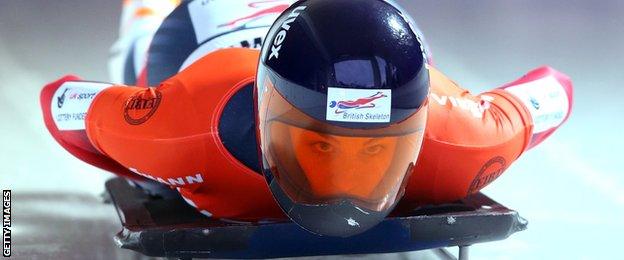
Laura Deas won her first World Cup title in the opening race of the 2015-16 season in Altenberg, Germany.
My brother, who never listens to the radio, happened to be listening one day and he heard the launch of the Girls4Gold scheme.
This was a new type of project being rolled out nationwide by UK Sport with the intention of finding females from the ages of 18-25 to be talent spotted for certain Olympic sports and fast-tracked to medal contention.
He mentioned it to me because he knew I fit the criteria they were looking for. I thought it sounded like an amazing opportunity but I wasn't sure whether to risk having to give up eventing, as I'd set my heart on that being my career.
In the end my mum put the form in on my behalf because I wasn't showing any signs of doing it. A few weeks after that I got a letter asking me to go to Manchester to do the initial phase one trial and that's where it started.
Learning through trial and error
The thing I noticed the most during the first week I got on the ice - apart from the bruises - was the fact you have this constant sense of acceleration.
There's so little friction and you've got no ability to brake. You're just thinking about the fact you are going quicker and quicker and quicker and it's not going to stop until you cross the finish line and start to go uphill again.
Once you're on you're committed to the whole run, whether you like it or not. Even if it starts to go wrong you've still got to deal with it and you can't bail out.
To begin with, sliding feels like a complete assault on the body, physically and mentally. In the beginning you're always learning through trial and error so hitting walls unfortunately goes with the territory!
Deas 'in a good place' for new season
As you build your skill level you start to learn how to steer. Over time it becomes a fine- tuning exercise about small body movements, trying to make subtle changes which will make the difference between an average run and a fast one.
Our run times are measured to the hundredth of a second so tiny alterations can make a big difference. And here's another parallel between riding and sliding - if you're doing it well it tends to look like you're not doing anything at all, so when people ask me if I steer or if I just hold on, I have to take it as a compliment!
The fastest track is Whistler in Canada, where the first World Cup is this year. It's fairly routine to get up to 90mph there. Other tracks aren't necessarily as fast but depending on the geometry of the track you might have a slower track but some really high pressures.
I'm looking forward to the fact we're going to have a big challenging track for our first World Cup. It should be a really good race as it's a technical course and it suits good drivers. It's a track I've got to know quite a lot better over the last couple of years and so hopefully it's somewhere I can put in a good performance.
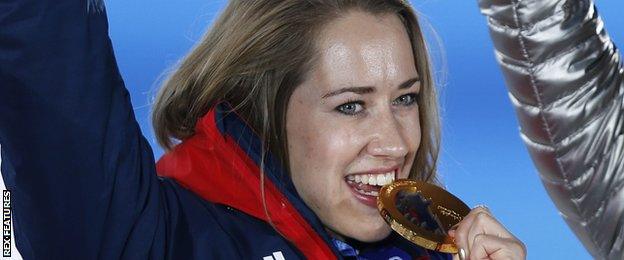
Lizzy Yarnold completed a career 'grand slam' with victory at the 2015 Skeleton World Championships.
Physically I'm feeling in really good shape to take on the rigours of the World Cup circuit. Not only is it important because of needing a fast push at the top, but because sliding is quite hard on the body in general. We're dealing with huge amounts of G-forces in corners, so just holding position on the sled is a full body workout.
Great Britain has a really strong history of success in skeleton. We've won a medal at every Winter Games since it was introduced to the Olympics in 2002.
In spite of this, when you talk skeleton at home in the UK, not everyone knows what it is. This often leads to a description starting along the lines of '…you know that film Cool Runnings? Well, it's not that, it's the head first one…' This gives the slight feeling of being the underdogs, especially as we don't have our own track in the UK to train on, but we are definitely a force to be reckoned with on the international circuit!
Friends and rivals
This year Lizzy Yarnold returns from a year-long break to the World Cup circuit, so we will be travelling and competing alongside each other.
We go back a long way so it will be great to have her back in the fold. I think we're really good for each other on a competitive level as well as being good friends off the track, as we're always pushing each other on to higher standards.
When you've got the Olympic champion as your teammate, you can't afford to let standards slip. I think it bodes really well for the season and hopefully we'll push each other on to some really good results.
- Published2 November 2016
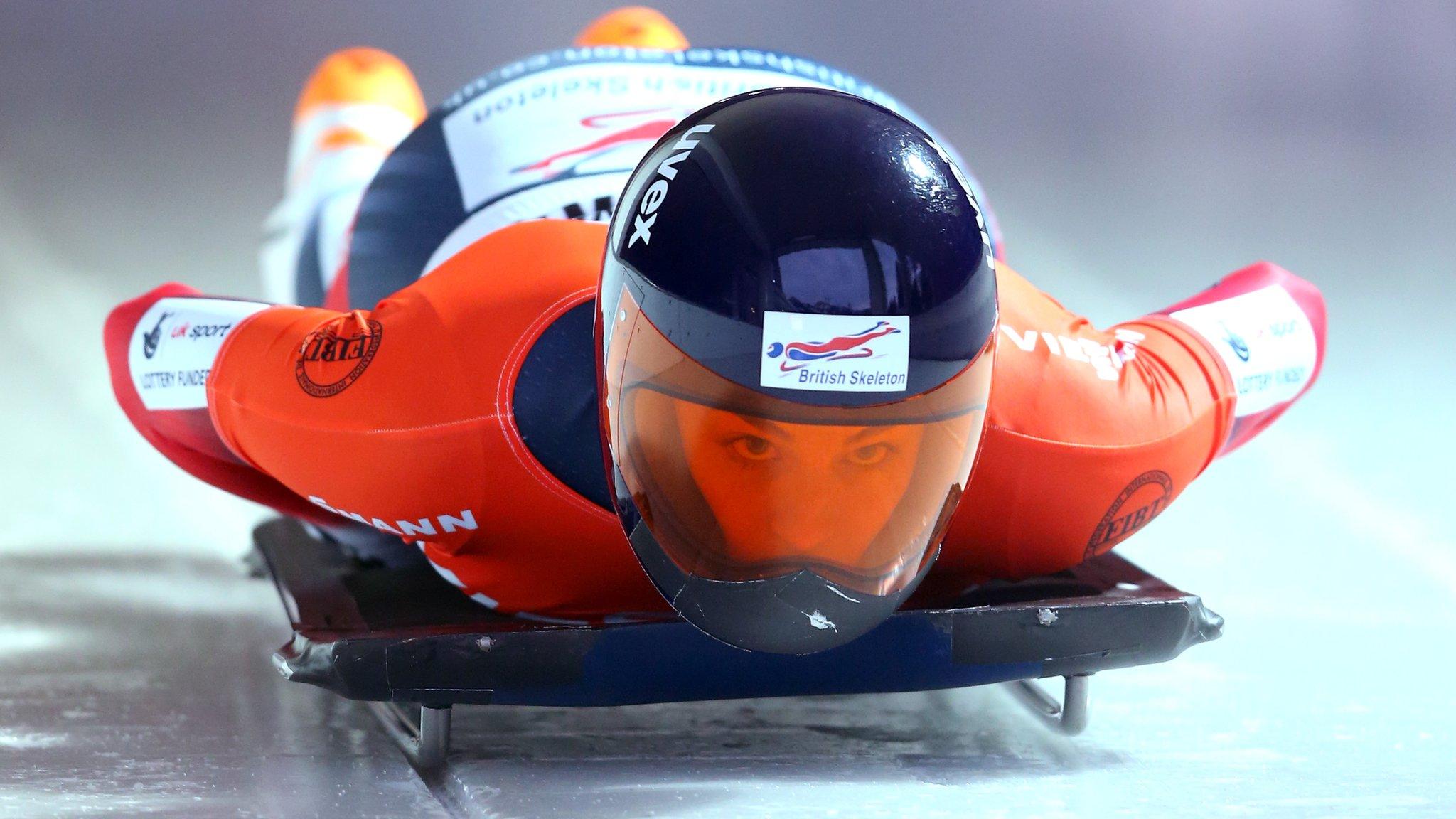
- Published27 November 2015
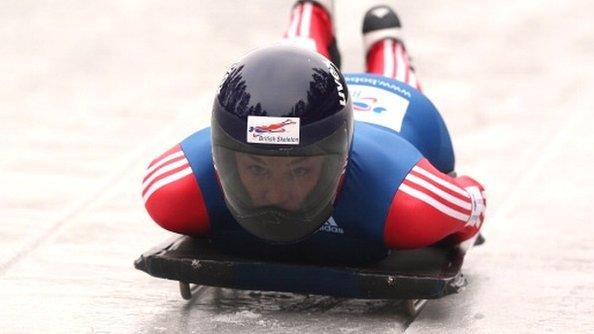
- Published21 November 2015
